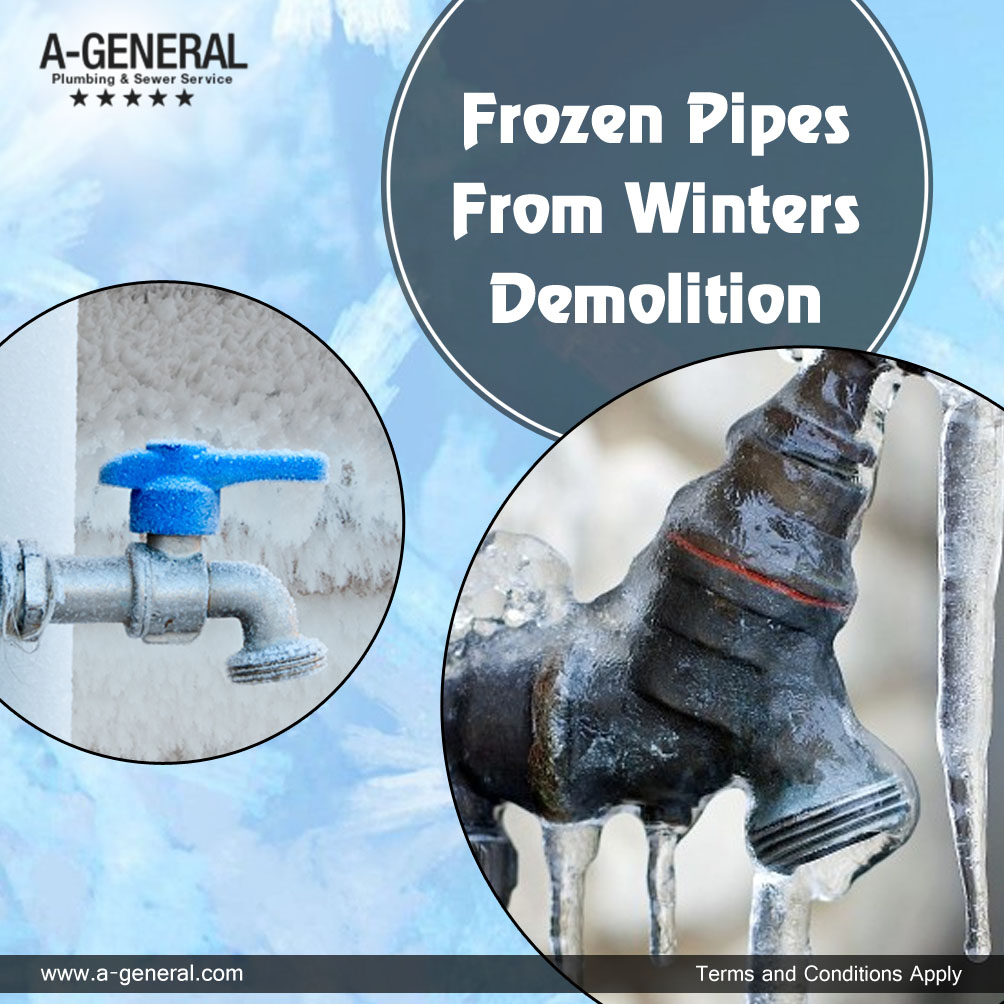It’s the month of February and it is also that month of the year, when freezing temperatures create havoc in our daily lives. According to the latest weather reports, It is going to be the coldest year in America, which is mainly due to incoherent atmospheric behavior. But in these chilly conditions, the two most common risks that you would face at your home, office and school are the ice dams and frozen pipes.
Ice dams are formed when heavy snow buildup melts during the day, then refreezes as temperatures drops down overnight. This is a continuous process, which occurs during the full length of the winter season. After several days of this cycle, the melted water and ice combine together under the shingles, entering the attic and eventually damaging ceilings, walls, and contents.
One household accessory that directly faces the problem of this killer winter are the plumbing fixtures and frozen pipes. Frozen water pipes are always a cause of concern and a sure shot possibility during the cold winter months. Although there are various tips and tricks that you can do to prevent frozen pipes, there is always a chance that pipes will freeze and finally burst. But, if such is the situation, a rapid action to thaw frozen pipes can help minimize or prevent damage to pipes.
There are various indicators that suggest your pipeline is affected due to the unconditional snow. A faucet that produces no water, or very little water is one of the signs of a frozen pipe. Sniff out the location of the freeze by following the water pipes from the faucet to the frozen area. Note down that pipes are more likely to freeze when they are near exterior walls, places with little insulation and the point from where the water comes into the house from outside. An exposed pipe is easier to thaw than pipes located behind walls.
Below are some tips and tricks on how to thaw frozen pipes and help prevent burst pipes.
How To Thaw Frozen Pipes?
To thaw a frozen pipeline, begin by checking all the faucets in your home to find out how many areas of pipe are affected. Sometimes only one of the faucet will be affected, but otherwise multiple fixtures do freeze. Once you get to know the extent of freeze, it will be easy for you to determine, how and where to start thawing frozen pipes.
When you start the process, turn the affected faucets on and allow water to drain as it thaws. The running water helps to melt the frozen water in the pipeline more rapidly. Point to note here is that a trickle of running water is a good way to prevent frozen pipes.
The next step would be to gradually warm up the pipe to melt the ice with several safe heating sources which are specially used to thaw frozen pipelines. The best appliance would be an electric heating pad as it can be wrapped around the pipe to heat it evenly. Human accessories such as a hair dryer or portable space heater are also good heat sources to use. Thaw frozen pipes moderately and evenly to prevent damage to the pipe. Please keep in mind to never use a blowtorch or open flame of any sort for this plumbing process, as a torch or a flame can develop a fire hazard and it can heat the water present in the pipe very quickly, causing you further damage.
Finally, continue to heat and closely check for any frozen pipes until water is running through the faucet at the regular pressure. Just a slight decrease in water pressure is a tip off which says ‘there is still some ice in the pipes’. When the water is once again running in the regular flow, now its time to consider what preventive measures you can take to avoid frozen pipes in the near future.
Tips to Overcome Frozen Pipe Hazard:
* Be alert to shut off the main water line if the pipe begins to leak as it thaws. Always carry a container to catch the dripping water.
* Never be distracted or walk away while you are thawing a frozen pipe. The process should be watched closely to avoid water damage in case of a leak.
* If you are not able to access the frozen pipe because if it is in the wall, the process can be carried out by turning up the heat in the house.
* If you are not able to trace the location or you are unable to carry out the operation of the frozen pipes, do not hesitate to call a professional plumbing service company, as they are the experts to carry general plumbing repairs.
* Quick action against frozen pipes can save you of the misery and expense of repairing a burst pipe.

